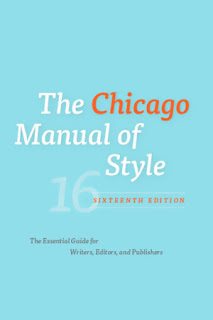Tips for Writers: Invest in Style

Tips for Writers: Invest in Style
And I'm not talking fashion here (although take a look atthe article in The Atlantic about Joan Didion and her early years at Voguehaving an impact on her writing, particularly on the details about clothes andaccessories). No, I'm talking about style as in: Usage, Grammar, Punctuation.
I have come to expect errors in Freshman Composition classes—kidsdon't seem to get the kind of education in grammar that they used to—but inpublished writing, or even writing submitted with the hope of publication, Idon't want to see mistakes. In published work, editors should catch theseproblems. In submitted work, writers should realize that editors have betterthings to do than fix their punctuation. As an editor, I'm likely to reject apiece that has errors. I'm busy. I'll just move on to the next story to findone that won't be so much work to get ready for publication.
But of course we're not all born with innate knowledge ofgrammar, and I confess that my understanding of punctuation changed dramatically when Ibegan teaching Freshman Composition. In order to teach the students, I had tomaster the subject myself, and I discovered a number of things I'd been doingwrong. So now, if I'm in doubt about a question of usage, grammar, orpunctuation, I look it up. And I can look it up because I have acquiredreference books where I can almost always find the answer. I've got three torecommend.
The first is Strunk & White's The Elements of Style. Get it. Read it. Keep it handy. (I have the FourthEdition, which I think is the latest.) It has several parts: Elementary Rulesof Usage; Elementary Principles of Composition; A Few Matters of Form; MisusedWords and Expressions; and An Approach to Style. This is more than just a guideto grammar; it's also about writing more clearly. And it's written in a waythat even Freshmen can understand. For example, under "Misused Words andExpressions" is the entry for Lay: "Atransitive verb. Except in slang ('Let it lay'), do not misuse it for theintransitive verb lie. The hen, orthe play, lays an egg; the llama lies down. The playwright went home and lay down. Lie, lay, lain, lying. Lay,laid, laid, laying." Under "An Approach to Style" is guidance on the use offigures of speech: "The simile is a common device and a useful one, but similescoming in rapid fire, one right on top of another, are more distracting thanilluminating. Readers need time to catch their breath; they can't be expectedto compare everything with something else, and no relief in sight. When you usemetaphor, do not mix it up. That is, don't start by calling something aswordfish and end by calling it an hourglass."
The second is the ChicagoManual of Style. I suppose there are some who read CMOS like a novel (as my mother used to claim she read cookbooks),but I keep it within reach for reference. It's so thorough that it has amassive and somewhat confusing index, but it's worth digging until you findexactly the right entry. (I have the 15th Edition, which is not thelatest, but it's an expensive book and so I'm not inclined to replace the one I'vegot. If you don't have an older one, spend the money to get the latest.) Here is the entry on the lie/lay distinction: "Lay is a transitive verb—it demands a direct object. It isinflected lay-laid-laid. Lie is an intransitive verb—it nevertakes a direct object. It is inflected lie-lay-lain."(Examples are also provided.) That's the same information as in Strunk &White, although in plainer terms. As for figures of speech, it appears that CMOS doesn't care about scrambled metaphorsor floods of similes.
The third reference book I keep handy is Bryan Garner's Modern American Usage. Garner isactually one of the CMOS authors, sothis guide is generally consistent with CMOS,but it's organization is a little more user friendly and it's text less sterile.Plus, it goes into more detail on matters of usage such as the lie/laydistinction, which takes up an entire page. It not only discusses thedistinction, it also examines the main ways in which writers incorrectlysubstitute one for the other. The entry begins: "Very simply, lie (= to recline, be situated) isintransitive—it can't take a direct object. But lay (= to put down, arrange) is always transitive—it needs a directobject . . . To use lay without adirect object, in the sense of lie,is nonstandard. But this error is very common in speech—from the illiterate tothe highly educated. In fact, some commentators believe that people make thismistake more often than any other in the English language. Others claim that it'sno longer a mistake—or even that it never was. But make no mistake: using theseverbs correctly is a mark of refinement." [The real mark of refinement, in myopinion, is editing. I can't edit what I've said, and so I may make this errorin speaking, but if I also make this mistake in writing, then I've made anerror in editing.] I've got the Second Edition; a new one came out last year.
I also have a few other reference books, including an MLA styleguide and a compact grammar guide, both of which occasionally come in handy,but I generally check Garner first and then CMOSif I have a question.
A writer should definitely make the investment in style. It's important.
Published on January 20, 2012 08:25
No comments have been added yet.



